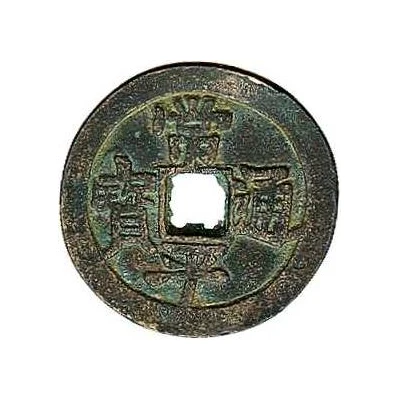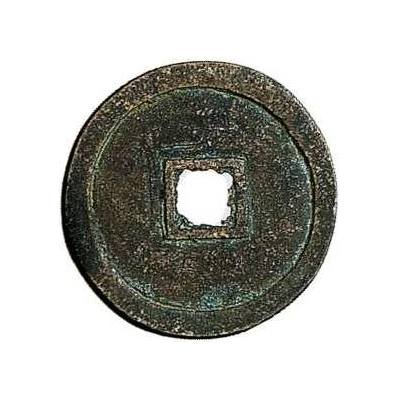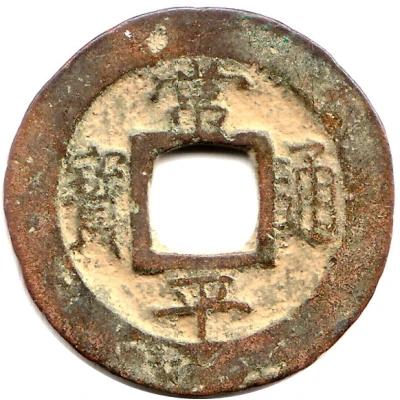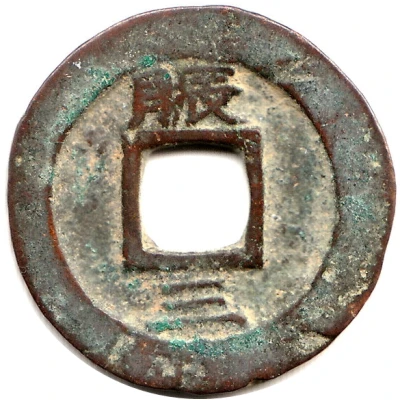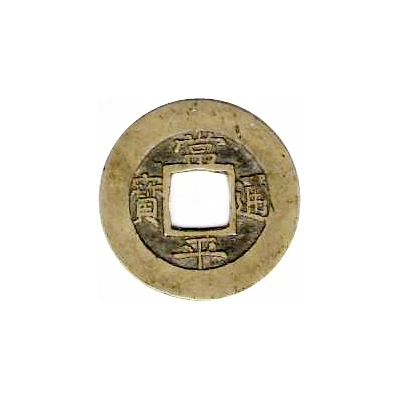
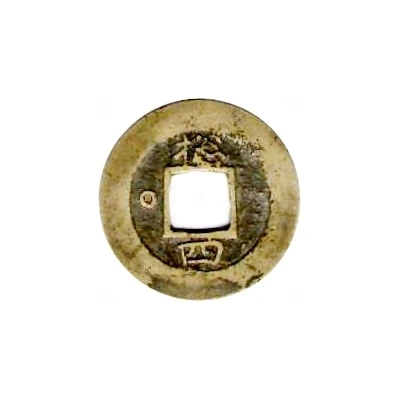

© bbybugs (CC BY-NC-SA)
1 Mun Chong ND
| Brass | 5.06 g | 25.5 mm |
| Issuer | Korea |
|---|---|
| King | Injo (1623-1649) Hyojong (1649-1659) Hyeonjong (1659-1674) Sukjong (1674-1720) Gyeongjong (1720-1724) Yeongjo (1724-1776) Jeongjo (1776-1800) Sunjo (1800-1834) Heonjong (1834-1849) Cheoljong (1849-1863) |
| Type | Standard circulation coin |
| Years | 1633-1892 |
| Value | 1 Mun (0.001) |
| Currency | Kingdom of Joseon - Mun (1633-1892) |
| Composition | Brass |
| Weight | 5.06 g |
| Diameter | 25.5 mm |
| Shape | Round with a square hole |
| Orientation | Medal alignment ↑↑ |
| Demonetized | Yes |
| Updated | 2024-10-06 |
| Numista | N#41946 |
|---|---|
| Rarity index | 65% |
Reverse
Mint mark at top, serial number at bottom, sun at left
*捻 (Chong): General Military Office
Script: Chinese (traditional, regular script)
Lettering:
捻
○
四
Translation: General Military Office, series 4
Edge
Plain
Interesting fact
The 1 Mun (Chong) coin from Korea, which was minted between 1633 and 1892, features a unique design that reflects the country's cultural and historical heritage. The obverse side of the coin depicts a representation of the mythical creature known as the "hwaluda," which is a half-dragon, half-tiger creature that is said to have the power to control the oceans and protect the country from harm. The reverse side of the coin features the Korean characters for "1 Mun" and "Chong," which signify the coin's denomination and the era in which it was minted. The use of brass as the material for the coin was a common practice during this time period, as it was a readily available and durable metal that could withstand the wear and tear of circulation. Overall, the 1 Mun (Chong) coin is a fascinating piece of Korean history that offers a glimpse into the country's rich cultural heritage and monetary system during the 17th to 19th centuries.
